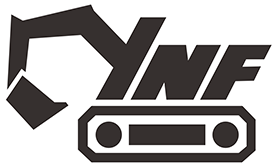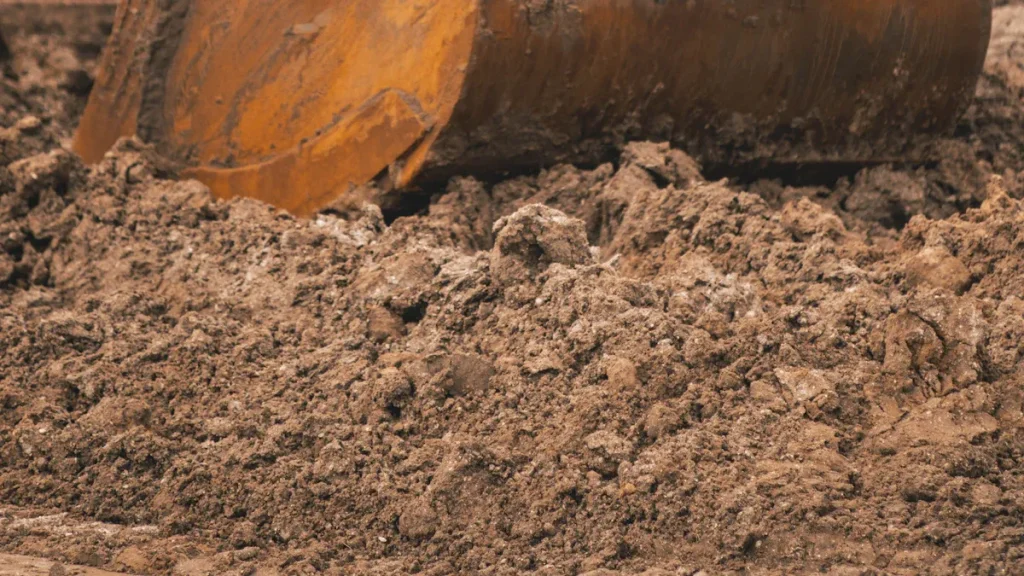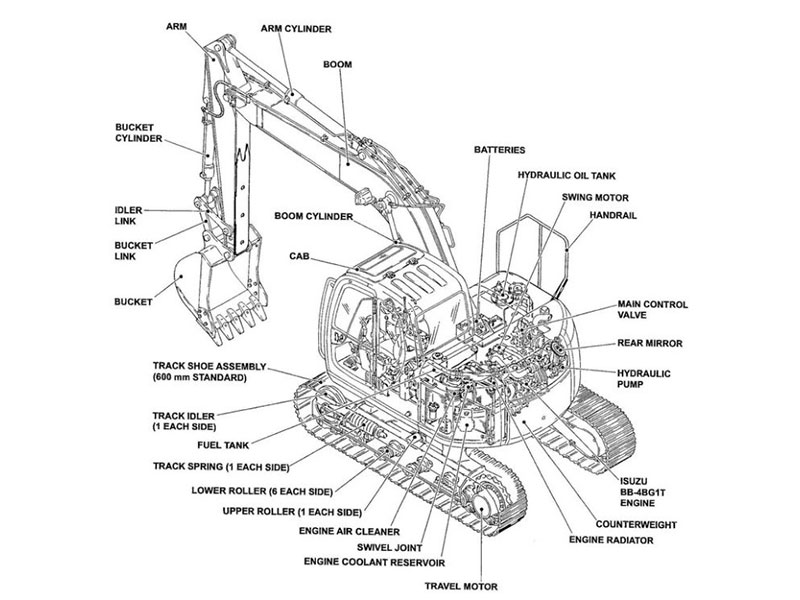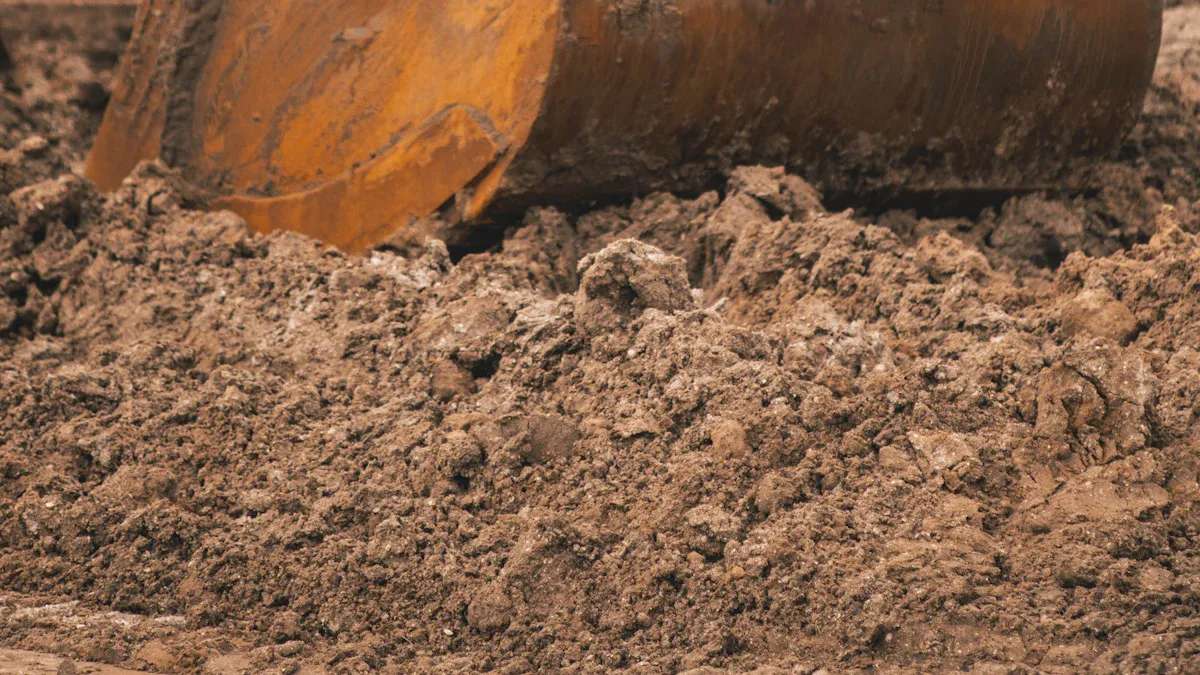
Choosing excavator teeth in 2025 means you must pick the right type and material for your ground. Modern excavator bucket teeth have new designs like tiger and twin tiger teeth. These help with stability and breaking hard things. Heavy-duty and custom bucket teeth use new alloy and high manganese steel. This makes them last longer and work better. Some even have smart wear monitoring. If you pick the right bucket teeth, your machine works better and stops less. This guide will help you feel sure when picking the right tooth for your excavator.
Key Takeaways
Pick excavator teeth that fit your ground and job. This helps you dig faster and use less fuel. It also keeps your machine safe.
Choose teeth made from strong materials like alloy steel or tungsten carbide. These materials last longer and resist wearing out.
Make sure the teeth fit your bucket and adapter. This stops damage and keeps your work safe.
Check your bucket teeth often and take care of them. Change them when they are worn about 30-40%. This stops expensive repairs.
Use the selection guide to pick the right tooth shape and material. This makes your work better and saves you money.
Why Excavator Teeth Choice Matters
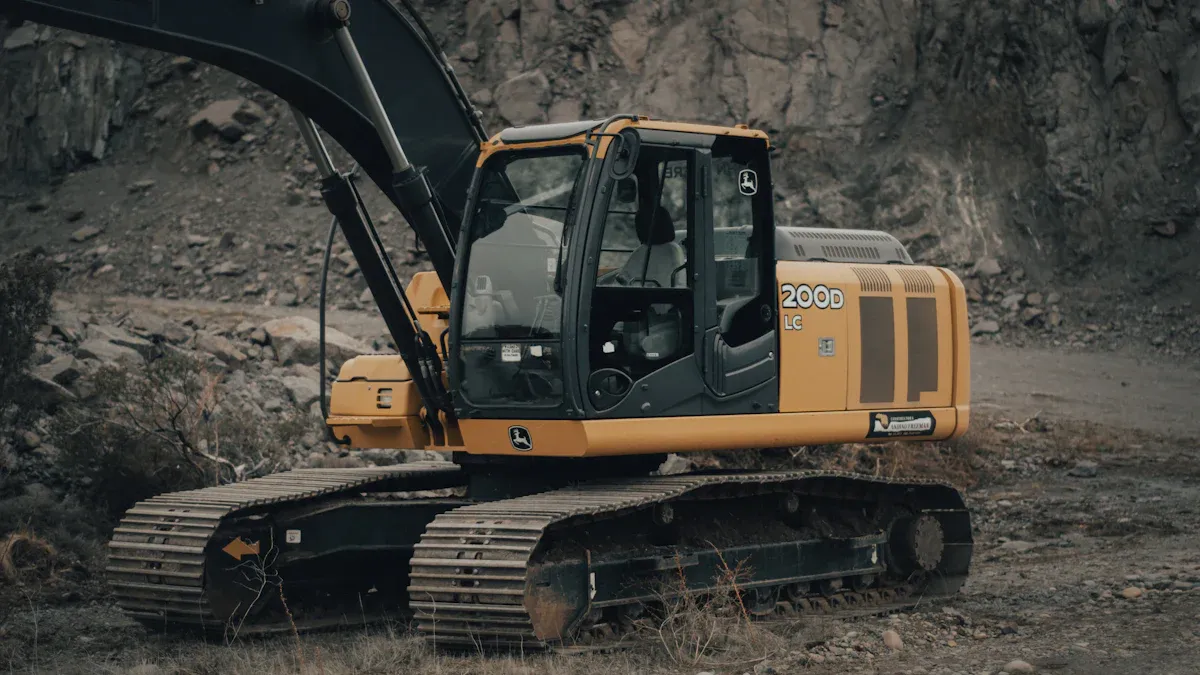
Performance and Efficiency
When you choose the right excavator teeth, you help your machine work faster and better. The shape and material of the teeth focus the force into small points. This makes it easier for your excavator to dig into hard or packed ground. You use less fuel because the machine does not have to work as hard. You also finish jobs more quickly, which means you can take on more work.
The right bucket teeth help your excavator move through sticky or wet soil. Less dirt sticks to the teeth, so you spend less time cleaning.
Good excavator teeth protect the bucket from wearing out. You only need to replace the teeth, not the whole bucket.
New designs, like tiger teeth, give you improved efficiency in tough jobs such as mining or demolition.
If you use the wrong or worn-out bucket teeth, your excavator must work harder. This increases fuel use and slows down your work. Studies show that every 0.5-ton increase in bucket weight can make your cycle time 10% longer and lower your yearly profit by 15%. Picking the right excavator teeth boosts excavator performance and helps you save money.
Cost and Maintenance
You can lower your maintenance costs by picking high-quality, wear-resistant excavator teeth. These teeth last longer and do not break as easily. When you match the teeth to the soil and job, you dig better and replace teeth less often.
Tip: Check your bucket teeth often. Replace them when they are worn down by 30-40%. This keeps your adapters safe and avoids expensive repairs.
Here is a quick look at what causes teeth to fail and how material choice matters:
Factor/Failure Mode | Description |
|---|---|
Wear (90-95% of failures) | Teeth wear down from constant digging. Harder materials last longer. |
Fracture (5-10% of failures) | Teeth can break from hard hits or poor design. |
Material Choice | Alloy steels with special elements last longer and work better in tough jobs. |
Regular cleaning, sharpening, and replacing pins with the teeth also help reduce how often you need repairs. Using OEM quality bucket teeth ensures a good fit and longer life for your excavator.
Factors to Consider When Selecting Excavator Teeth
When you pick excavator teeth, you need to think about a few things. The right teeth help your machine work safely and quickly. Good choices let you dig faster, save money, and keep your machine in good shape. Here are the main things to think about when picking excavator teeth:
Ground Conditions
You should always match your excavator teeth to the ground you will dig. The job and ground type change how your machine works. Soft soil, clay, and sand need different teeth than hard rock or frozen ground. Parallelogram-style rippers work well in easy or medium ground. They keep the tooth angle steady and help you dig better. For hard rock or tough ground, you need adjustable rippers. These let you change the tooth angle for better digging. If you use the wrong teeth, your machine will have a hard time and wear out faster.
Tip: Always look at the ground before you start. This helps you choose the best excavator teeth for your job.
Tooth Types and Profiles
There are many kinds of excavator teeth. Each one is made for a special job. The most common types are tiger, twin tiger, chisel, and flat. Each has good and bad points.
Tooth Design | Key Features | Pros | Cons | Suitable Applications |
|---|---|---|---|---|
Single Tiger | Pointed spike, narrow working edge | Great for digging hard, packed dirt | Not strong, does not make smooth bottom | Digging and trenching in rocky or packed ground |
Twin Tiger | Two spikes | Digs even better in hard ground | Costs more, not strong, rough bottom | Loader use on tough ground needing good digging |
Chisel | Wide, flat edge | Strong, can be used for many jobs, makes smooth bottom | Not good for hard dirt or breaking rocks | Hauling, leveling, trenching in loose dirt |
Rock Chisel | Wide with ribs for strength | Strong, digs well, can be used for many jobs | Costs more, not good with hard hits, no smooth bottom | Skid steer or loader on rocky ground needing good digging |
Tiger teeth help you dig best in hard or packed ground. Twin tiger teeth work even better in rock or frozen dirt. Chisel teeth are strong and last a long time. They are good for most digging and make a smooth bottom. Flat teeth help you move loose dirt. Rock teeth are for the hardest jobs. You should always match the tooth shape to your job and ground.
Tooth Material
The material of your bucket teeth changes how long they last and how well they work. Most regular excavator teeth use high manganese steel. This is tough and easy to fix. Alloy steel teeth last longer and do not wear out as fast. Tungsten carbide coated teeth last the longest. They last two to three times longer than regular teeth, but cost more and are hard to fix.
Material Type | Wear Resistance | Hardness | Impact Toughness | Wear Life Compared to Ordinary Teeth | Cost Index | Repairability |
|---|---|---|---|---|---|---|
High Manganese Steel | Medium | HB450-550 | Excellent | Baseline | 1.0 | Easy |
Alloy Steel | Good | HRC55-60 | Good | Better than high manganese steel | 1.3-1.5 | Difficult |
Tungsten Carbide Coating | Excellent (lowest wear) | HRA90+ | Poor (brittle) | 2-3 times longer than ordinary teeth | 2.5-3.0 | Not repairable |
Alloy steels that are hardened balance toughness and wear resistance. White iron castings are very hard but can break easily. Hardfacing with tungsten carbide makes the surface very hard and helps teeth last longer. You should pick the material based on your job and ground.
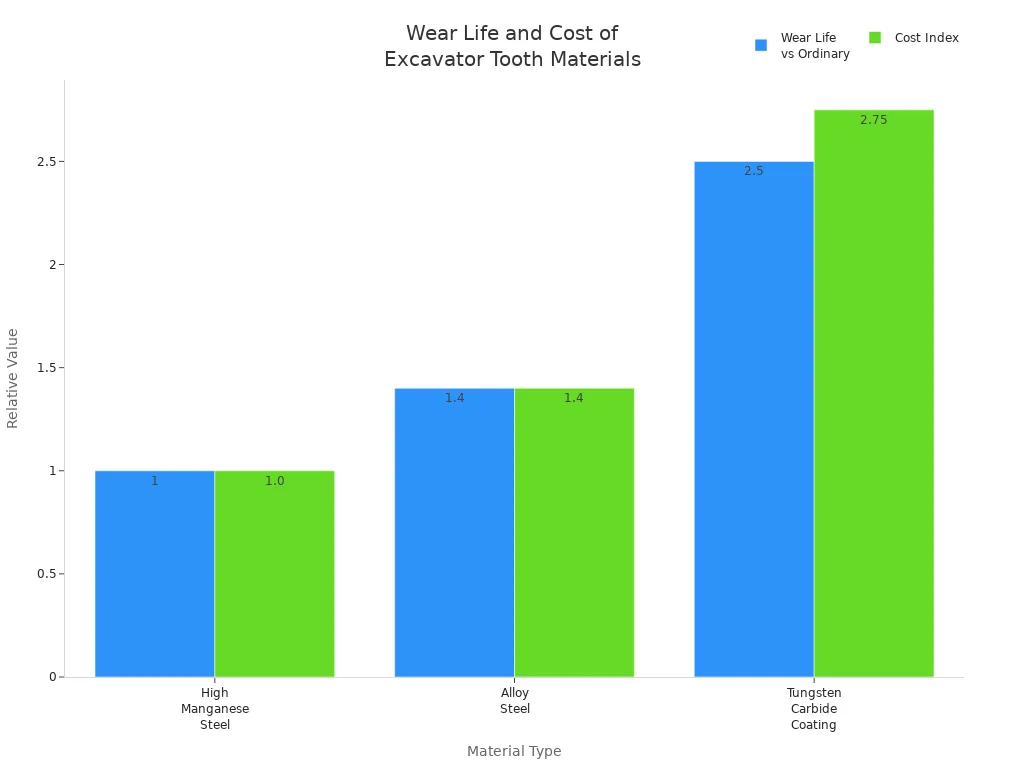
Compatibility and Sizing
The size and fit of excavator teeth are important for safe work. You must make sure your bucket teeth fit your machine and adapters. Makers use steps to check if equipment fits:
Find the tooth model, shape, and size for your excavator.
Check the inside size of the tooth pocket. This tells you if the tooth fits your adapter and matches your machine’s weight.
Match the tooth shape to your job and machine. Some shapes work better for excavators, others for loaders.
Pick the right fixing system. You can get horizontal or vertical pins, bolts, and different tooth pocket shapes.
Make sure the tooth fits your machine’s weight and adapter. This keeps you safe and stops machine damage.
Pick the right job type. General-purpose teeth work for most jobs, but you need rock teeth or tiger teeth for tough ground.
If you use the wrong size or type, your machine may not work well. Buckets that are too big can hurt your machine and are not safe. Buckets that are too small slow you down. Always check the maker’s guide for the right size and fit.
Note: Using the right excavator teeth and matching them to your machine helps your buckets last longer and keeps you safe.
Excavator Bucket Teeth Selection Guide
Choosing the right excavator bucket teeth can seem hard, but you can follow a clear process. This excavator teeth selection guide will help you make the best choice for your machine and job. You will learn how to assess your job application, match the tooth and material, and check fit and adapter. Use this guide to choose the correct bucket teeth and keep your excavator working at its best.
Assess Application
Start by looking at your job application. You need to know what kind of work your excavator will do. Industry experts recommend these steps:
Evaluate your construction job and pick a tooth design that fits. For example, use Tiger or Twin Tiger teeth for hard ground. Use Flare teeth for pushing or leveling. Standard dirt profiles work well for general digging.
Check if the tooth profile matches your excavator size and type. Mini excavators need smaller, lighter teeth. Large excavators need stronger teeth for heavy work.
Think about wear resistance. High-quality bucket teeth last longer and work better under tough conditions.
Ask your OEM dealer or parts expert for advice. They can help you with tooth selection, replacement, and maintenance.
Tip: Always match the tooth profile to your job. This helps you get the best results and keeps your excavator buckets in good shape.
Match Tooth and Material
After you know your job, you need to match the tooth type and material. Different excavator bucket teeth work better for different jobs. Here is how you can do it:
Use Tiger or Twin Tiger teeth for breaking hard or frozen ground. These teeth have sharp points that dig deep.
Pick Chisel teeth for general digging. They give you a smooth trench and last a long time.
Choose Flat or Flare teeth for moving loose soil or leveling. These teeth push more dirt and make the ground even.
For rocky jobs, use Rock Chisel or reinforced teeth. These teeth handle tough impacts and protect your excavator.
The material also matters. High manganese steel teeth work well for most jobs. Alloy steel teeth last longer and resist wear. Tungsten carbide coated teeth give you the best wear life, but they cost more and are harder to repair.
Tooth Type | Best For | Material Suggestion |
|---|---|---|
Tiger/Twin Tiger | Hard, packed, or frozen ground | Alloy steel or carbide |
Chisel | General digging | High manganese steel |
Flat/Flare | Loading, leveling | High manganese steel |
Rock Chisel | Rocky or abrasive jobs | Alloy steel or carbide |
Note: Matching the right tooth and material to your job helps you save money and keeps your excavator working longer.
Check Fit and Adapter
You must check the fit and adapter before you install new excavator bucket teeth. This step keeps your machine safe and working well. Follow these tips:
Measure the adapter pocket on your excavator buckets. Make sure the new teeth fit snugly.
Check the fixing system. Some teeth use horizontal pins, others use vertical pins or bolts. Use the right system for your machine.
Confirm the tooth size matches your excavator’s weight and power. Using the wrong size can damage your machine or slow your work.
Look at the OEM manual or ask your dealer for help. They can tell you the right excavator teeth size and compatibility for your model.
Callout: Always double-check the fit before you buy. Proper applications depend on good fit and strong adapters.
This excavator teeth selection guide gives you the steps you need. Assess your job, match the tooth and material, and check fit and adapter. You will get the best performance from your excavator and extend the life of your bucket teeth.
Bucket Teeth Maintenance Tips
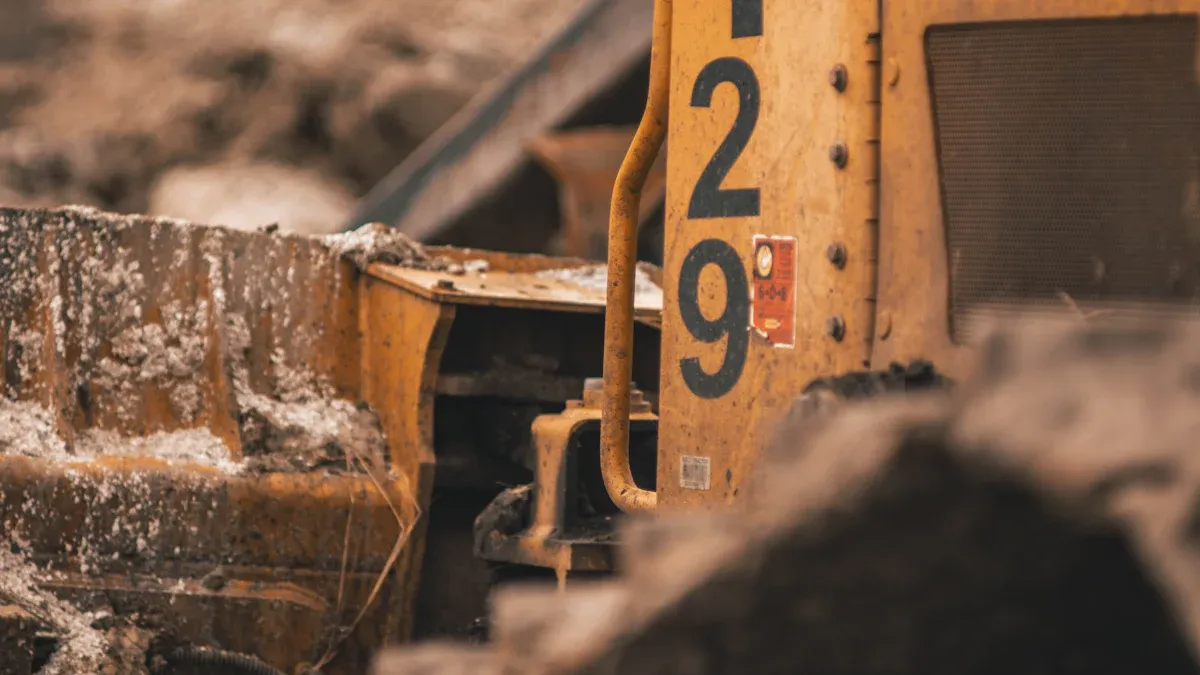
Care and Inspection
You can extend the life of your excavator teeth by following a simple care routine. Cleaning your bucket teeth after each use removes dirt and rocks that can hide early signs of damage. This step also makes it easier to spot cracks or rust. Regular cleaning helps you see problems before they get worse.
Set up a schedule for checking your excavator teeth. Inspections help you find loose pins, worn tips, or missing parts. Tighten any loose pins to keep your bucket stable and safe. If you use bolt-on teeth, check that they are secure and not worn down. Skilled operation also protects your excavator and reduces stress on the teeth.
Here is a quick inspection checklist:
Clean the bucket and teeth after every job.
Look for cracks, rust, or missing pieces.
Check the tightness of all pins and bolts.
Inspect for signs of uneven wear or misalignment.
Rotate or replace teeth before damage reaches the bucket lip.
Tip: Regular inspections and cleaning can improve equipment efficiency by up to 40%. This saves you money and keeps your excavator working longer.
When to Replace
Knowing when to replace your bucket teeth is key to protecting your excavator and keeping your work on track. Watch for these signs:
The tip of the tooth looks blunt or flat. This reduces digging power and slows your excavator.
You hear strange sounds or feel vibrations during digging. Loose or missing teeth often cause this.
You see cracks, broken tips, or worn roots. These problems can lead to bigger damage if ignored.
The tooth seat looks bent or the lock pins feel loose. This means the teeth may not stay in place.
Different jobs and materials affect how long your excavator teeth last. Teeth made from high manganese steel work well for general digging. Alloy steel or carbide teeth offer better wear resistance for tough jobs like mining or quarry work. Regular maintenance and choosing the right material help you get the best bucket tooth lifespan.
Note: Equipment failure downtime can cost thousands of dollars per hour. Timely replacement of worn teeth prevents costly repairs and keeps your excavator running smoothly.
Bucket Teeth Buying Guide Table
Types and Applications
This bucket teeth buying guide helps you compare different types. Each tooth type works best for a certain job or ground. Picking the right one helps your excavator last longer and work better.
Excavator Bucket Teeth Type | Primary Application(s) | Key Features and Notes |
|---|---|---|
General Purpose Teeth | Light excavation in soft dirt | Suitable for mini and small excavators; 400 HBW hardness; 120mm adapter size |
Heavy Duty Teeth | Rocky terrain and heavy-duty digging | Reinforced tips; 500 Brinell hardness; fits 30-ton excavators; 145mm shank and 25mm pin diameter |
Penetration Teeth | Icy conditions, hard and compact ground | Pointed, slim profile; 90mm length; 35mm vertical pin; optimized for shale and compact soils |
Tiger Teeth | Rock shattering and heavy penetration | Dual tips; tensile strength >1500 MPa; 60-degree angle; suitable for 20-45 ton machines |
Long Teeth | Trenching and deep digging | 200mm length for extended reach; wear-resistant steel; 50 Rockwell hardness |
Chisel Teeth | Landscaping and grading | Flat finish; 100mm width; 45-degree edge angle; ideal for precise leveling in softer soils |
Flare Teeth | Wide, shallow cuts and backfilling | Broad shape; 180mm width; 15-degree slope for material spreading; ideal for large grading operations |
Tip: Pick the right excavator teeth for your job and ground. This helps your machine work well and last longer.
When you pick bucket teeth, check if they fit your machine. Make sure the teeth match your excavator’s size and the material you will move. You can also choose special tooth shapes or extra wear protection for better results.
Materials and Durability
The material of your bucket teeth changes how long they last. Good bucket teeth use strong steel and special coatings for extra strength. Always think about your job and pick the best material for your needs.
Material Type | Durability / Lifespan | Key Characteristics and Best Use Cases |
|---|---|---|
High Manganese Steel | Good (baseline) | Tough, easy to repair; best for general digging |
Alloy Steel | Better than manganese | Higher wear resistance; ideal for heavy duty bucket teeth |
Tungsten Carbide | Best (2-3x longer lifespan) | Superior hardness; best for rocky or abrasive conditions |
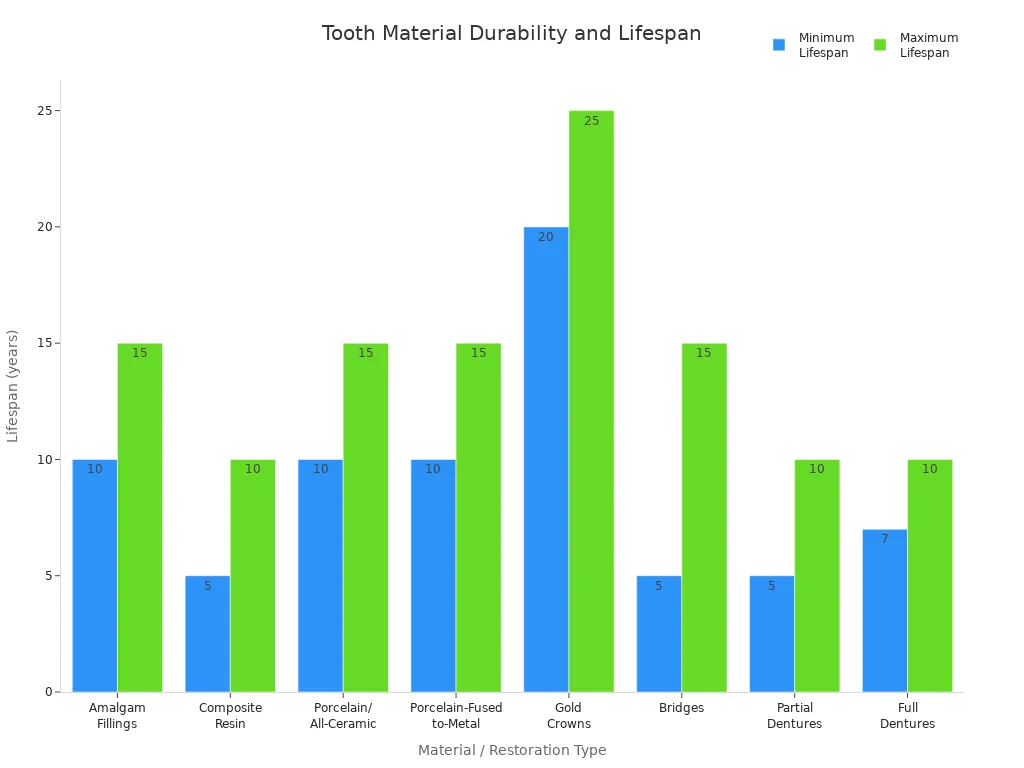
You can pick OEM or aftermarket bucket teeth. OEM parts use strong steel and are made to fit well. Aftermarket teeth can be cheaper, but quality is not always the same. Some aftermarket teeth use tungsten carbide for longer life, but always check if they fit and read reviews.
Note: Check your bucket teeth often. Look for cracks or worn spots. Change teeth when they are worn out to keep your excavator safe.
A bucket teeth buying guide table helps you find the best tooth for your job. This saves time, keeps your machine working, and helps your bucket teeth last longer.
Picking the right excavator teeth helps your machine work better and faster. When you choose teeth that fit your machine and job, you:
Dig quicker and more accurately
Lower the chance of breaking parts or stopping work
Make your excavator and bucket last longer
Look at the selection guide and table to help you decide. Always read your manual or ask your dealer before you buy new excavator teeth. Think about how well the teeth work and how long they will last for every job.
FAQ
What is the best way to know when to replace excavator teeth?
You should check your teeth after every job. Look for worn tips, cracks, or loose pins. If you see any of these signs, replace the teeth right away to keep your machine safe.
Can you mix different types of bucket teeth on one bucket?
You should not mix different types of teeth. Using the same type on your bucket gives you even wear and better digging results. Mixing types can cause uneven wear and damage.
How do you measure for the correct bucket tooth size?
Use a tape measure to check the width and depth of your adapter pocket. Match these measurements to the new tooth. You can also check your machine’s manual for the correct size.
Are aftermarket bucket teeth as good as OEM teeth?
Some aftermarket teeth work well and cost less.
Always check reviews and make sure they fit your machine.
OEM teeth usually last longer and fit better, but may cost more.
